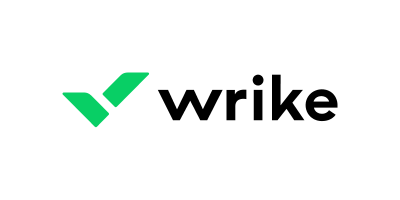-
Float: Best for agencies
-
Resource Guru: Best for affordability
-
Kantata: Best for an all-in-one resource management tool
-
ClickUp: Best for enterprises
-
Smartsheet: Best for workflow automation
-
Mosaic: Best for intuitive resource management
-
monday work management: Best for flexibility and customization
-
Bitrix24: Best for small businesses
-
Wrike: Best for midsize to large enterprise
-
Hub Planner: Best for distributed and WFH teams
Resource management software is beneficial for businesses of all sizes to efficiently and effectively manage their resources. These tools can track, monitor and optimize resources, such as finances, personnel, equipment and materials. This can help businesses to manage their operations better, improve productivity and increase profits.
SEE: The 10 best project management software and tools for 2023 (TechRepublic)
Hundreds of resource management software options are available, each with unique features and functionalities. To help you narrow down your options, we’ve compiled a list of the top-rated resource management software currently available.
Best resource management software
| Software | Best for | Starting price | Capacity Planning | Resource scheduling | Integration with third-party tools | Free trial |
|---|---|---|---|---|---|---|
| Float | Agencies | $6 per user per month | Yes | Yes | Yes | 30-day free trial |
| Resource Guru | Affordability | $4.16 per person per | Yes | Yes | Yes - 1,500+ | 30-day free trial |
| Kantata | All-in-one resource management tool | Custom price | Yes | Yes | Yes | Yes |
| ClickUp | Enterprise | Free | Yes | Yes | Yes - 1,000+ | Yes |
| Smartsheet | Workflow automation | Free | Yes | Yes | Yes | Yes |
| Mosaic | Intuitive resource management | $9.99 per user per month | Yes | Yes | Yes (Limited) | 30-day free trial |
| monday work management | Flexibility and customization | Free | Yes | Yes | Yes | 14-day free trial |
| Bitrix24 | Small businesses | Free | Yes | Yes | Yes | 30-day free trial |
| Wrike | Midsize to large enterprise | Free | Yes | Yes | Yes - 400+ | 14-day free trial |
| Hub Planner | Distributed and WFH teams | $7 per resource per month | Yes | Yes | Yes | 30-day free trial |
Featured partners
Jump to:
- What are the key features of resource management software?
- Why is resource management software important for project managers?
- How to choose resource management software
- Review methodology
Float: Best for agencies
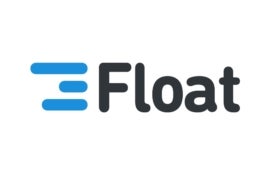
Founded in 2012, Float is a cloud-based collaborative resource management, planning and scheduling platform designed to help teams, agencies and studios manage their projects, resources and budgets.
Float allows users to easily visualize their workloads (Figure A), assess where their resources are utilized and allocate resources to maximize efficiency. The company currently serves over 4,000 customers in more than 150 countries. Some of their customers include Social Chain, a social marketing agency; Impression, a digital agency; BuzzFeed, a post-production team; and MetaLab, a design agency.
Figure A
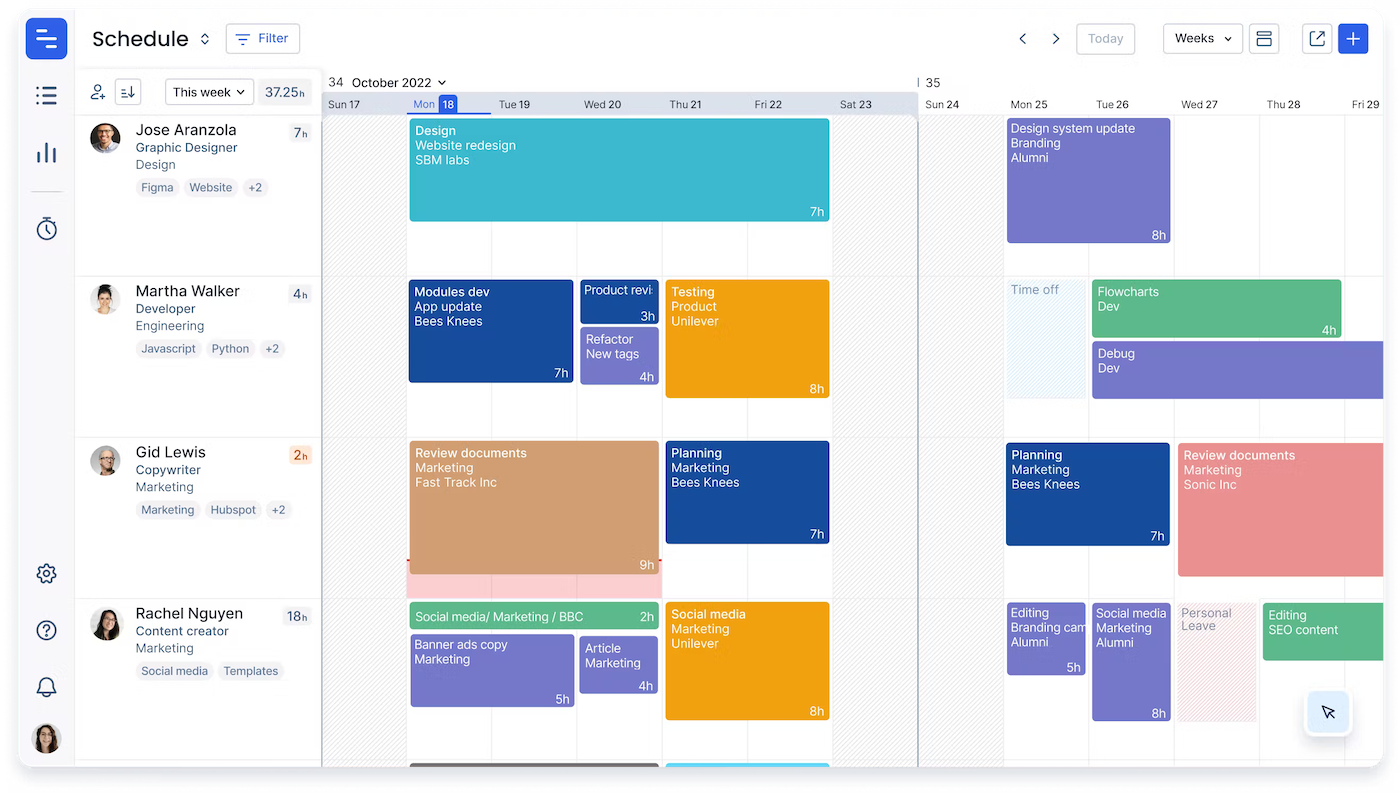
Pricing
- Resource planning: $6 per user per month, billed annually, or $7.50 per user billed monthly.
- Resource planning plus time tracking: $10 per user per month, billed annually, or $12.50 per user billed monthly.
- Plus pack add-on: $6 per user per month, billed annually, or $7.50 per user billed monthly.
Standout features
- Time tracking capabilities: Users can prefill timesheets based on scheduled tasks, compare estimated versus actual hours and invoice based on hours worked.
- Integrations: Float integrates various categories of apps, including project management tools like Jira, Teamwork, Asana, Trello, Xero Project, Intuit Quickbooks and WorkflowMax from Xero; calendar apps like Google Calendar and Outlook; and productivity apps like Slack and Zapier.
- Scheduling: Managers can create schedules, allocate resources and manage access roles.
- Compliance: Float complies with industry data standards such as SOC2 and GDPR.
- Capacity management: Float enables users to see who is busy with tasks and assign tasks to the appropriate team member.
Pros
- Float has iOS and Android mobile apps.
- Offers a 30-day free trial.
- All plans include 24-hour support.
- It offers a 10% discount to all 501(c)(3) nonprofit organizations.
- Drag and schedule view.
Cons
- Float has limited integrations.
- According to users’ reports, the tool is a bit pricey.
- Time tracking is only available in higher plans.
Resource Guru: Best for affordability
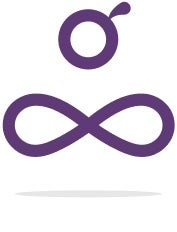
Resource Guru is a cloud-based resource scheduling software designed for businesses of all sizes. It helps companies manage and schedule resources, such as employees, meeting rooms, equipment and other assets. Resource Guru allows businesses to plan and allocate resources, track availability and manage conflicts to avoid scheduling clashes.
Resource Guru provides a centralized platform for businesses to manage their resources (Figure B), which can be accessed by employees, project managers and stakeholders. It offers real-time reporting, calendar synchronization, time tracking via integration and customizable views. The tool aims to improve resource utilization, reduce time spent on administrative tasks and increase overall productivity. Various organizations use it, including creative agencies, marketing agencies and consultants.
Figure B
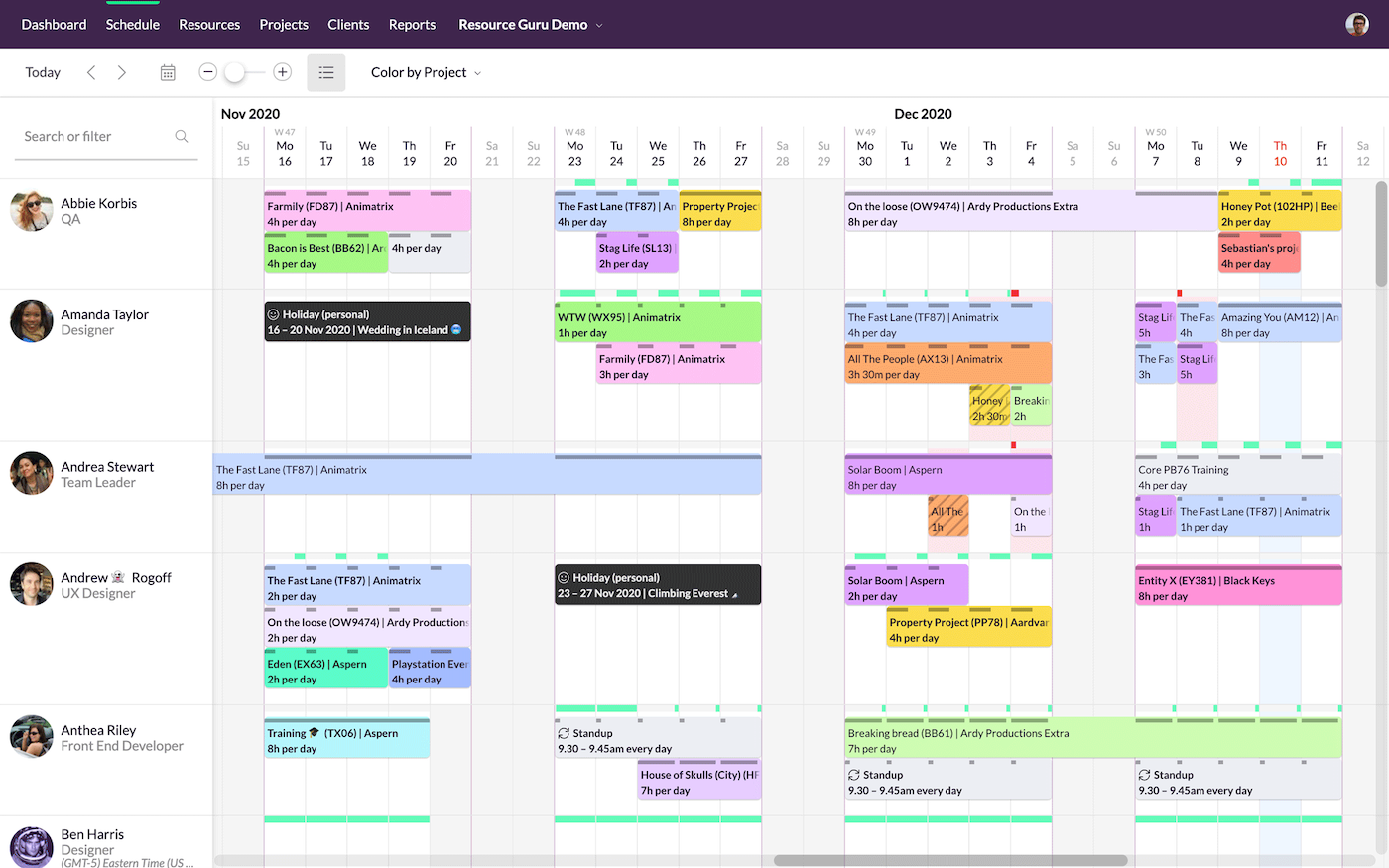
Pricing
- Grasshopper Plan: $4.16 per person per month, plus $2.08 per non-human resource, billed annually, or $5 per person per month, plus $2.50 per non-human resource, billed monthly.
- Blackbelt Plan: $6.65 per person per month, plus $3.33 per non-human resource, billed annually, or $8 per person per month, plus $4 per non-human resource, billed monthly.
- Master Plan: $10 per person per month, plus $5 per non-human resource, billed annually, or $12 per person per month, plus $6 per non-human resource, billed monthly.
Standout features
- Integrations: Resource Guru allows users to use Zapier to connect with over 1,500 third-party services, including Slack, Microsoft Teams, Trello and Zoom.
- Resource scheduling: The tool helps the team manage resource schedules. Users can drag, drop, extend, contract, split or duplicate items as needed.
- Resource management: The tool has a centralized resource pool and employee directory to help manage individual availability.
- Leave management: Resource Guru can be used to track employee leave or time off such as parental leave, public holiday, sick leave, compassionate leave and personal vacation.
- Project scheduling: The tool can help track resource utilization rates and prevent over-allocation.
- Equipment management: Users can track all project equipment in one schedule or view.
- Meeting room booking system: Resource Guru can book a meeting room and avoid double booking.
- Capacity planning: The tool enables users to track under-capacity and individual availability.
Pros
- 30-day free trial.
- Drag-and-drop capabilities.
- Project forecasting reports.
- Time zone support.
- Report downloads.
Cons
- Single sign-on only available with the master plan.
- The Grasshopper Plan and Blackbelt Plan lack phone support.
Kantata: Best for an all-in-one resource management tool
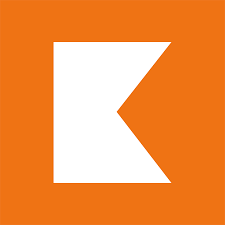
Formerly known as Mavenlink and Kimble, Kantata is a cloud-based software platform that provides professional services firms with project management, resource planning, financial management and business intelligence capabilities.
Kantata helps businesses manage their projects and resources. It offers project planning and scheduling, time and expense tracking, billing and invoicing, analytics, and reporting (Figure C).
Figure C
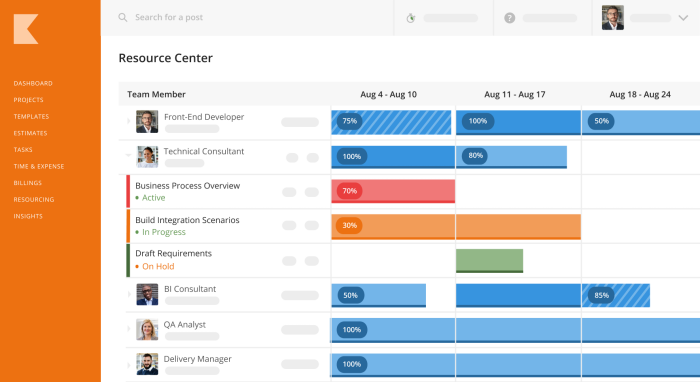
Pricing
Kantata offers custom pricing. Potential buyers can contact its sales team for a quote.
Standout features
- Integration: The tool integrates with multiple third-party software, including Sage, Google Workspace, Intuitive Quickbooks, Jira Software, Xero, Slack, Sales and Netsuite.
- Resources scheduling and management: Users can maximize resource utilization and explore resource impacts revenue, margins and timelines.
- Capacity planning: Managers can match and align skills with project demand plus access skills data about each team member.
- Financial management: Track time, expenses and costs across clients and projects.
Pros
- Offers custom pricing depending on users’ needs.
- Has built-in business intelligence.
- Includes 24/7 support.
- Enables customization via drag-and-drop tools and reusable components.
Cons
- Timesheets and forecasting capabilities could be improved.
- Reporting features could be improved.
ClickUp: Best for enterprises

ClickUp is a cloud-based project management, resource management and productivity platform that allows teams and individuals to manage tasks, projects, goals and more. The tool is created to be highly customizable, with a range of templates and configurations that can be adapted to suit different types of workflows and teams.
ClickUp offers a range of resource management tools that can help teams and organizations allocate and track resources, such as team members, equipment and materials across multiple projects and tasks. Featuring resource allocation, resource scheduling and resource tracking, ClickUp enables users to track resource usage and availability in real time (Figure D).
Figure D
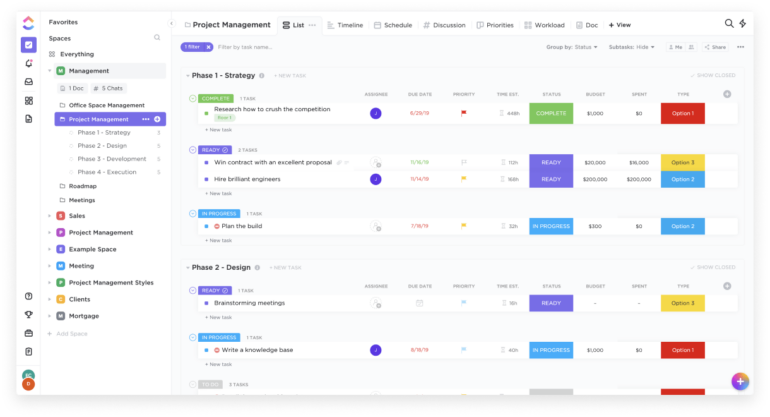
Pricing
- Free: Includes 100MB of storage.
- Unlimited: $5 per person per month, billed annually, or $9 per person billed monthly.
- Business: $12 per person per month, billed annually, or $19 per person billed monthly.
- Business Plus: $19 per user per month, billed annually, or $29 per person billed monthly.
- Enterprise: Custom pricing.
Standout features
- Time tracking: Users can track time from various devices, including desktop, mobile or browser.
- Custom form: The tool enables users to create custom forms that can collect vendor information or request information from vendors, such as costs, calculations and inventories.
- Customize workflow: Teams can create a workflow for managing assets, inventory, office space, business equipment and team tasks. Plus, it offers templates to enable reusability.
- Monitor performance: Users can add over 50 widgets to monitor real-time performance data.
- Collaboration: Users can create a channel to chat in real time, add comments, share attachments and assign action items to team members.
- Template: ClickUp has prebuilt templates for managing various resource types, including inventory, facility management, asset management, office space management, invoicing and facilities requests.
- Integrations: ClickUp offers over 1,000 integrations with third-party services, including Bitbucket, Figma, Jira, Zapier, Google, Outlook, Slack, Calendly and more.
Pros
- Drag-and-drop attachments.
- Automation capabilities.
- iOS and Android apps.
- Native time tracking.
Cons
- Users reported they infrequently experience glitches.
- There is a steep learning curve.
Smartsheet: Best for workflow automation

Formerly 10,000ft, Resource Management by Smartsheet is a cloud-based resource planning and scheduling tool that helps organizations maximize their resources and optimize their processes. It helps organizations track and manage people, projects and resources, allowing them to achieve their strategic objectives.
Resource Management by Smartsheet provides actionable insights on resource availability, task dependencies, capacity and performance, enabling managers to make better resource allocation decisions (Figure E).
Figure E
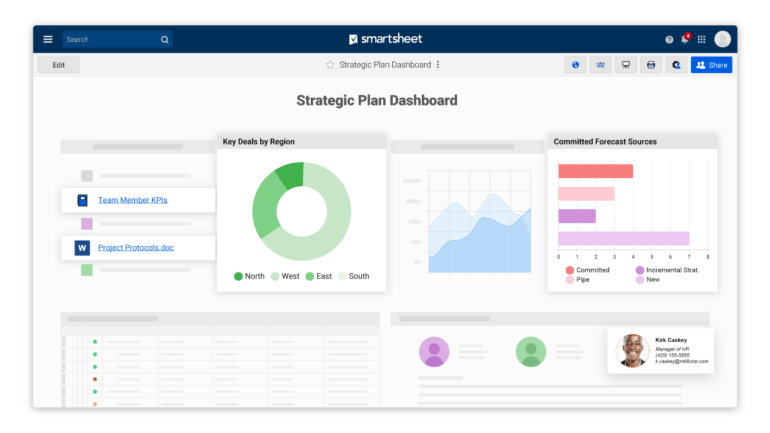
Pricing
- Pro: $9 per user billed monthly, or $7 per user per month, billed annually.
- Business: $32 per user billed monthly, or $25 per user per month, billed annually.
- Enterprise: Custom quotes.
Standout features
- Resource allocation: Smartsheet enables dynamic resource planning, team scheduling and forecasting staff needs.
- Project planning: The tool enables users to manage the projects, set stakeholders’ expectations and track statuses.
- Time tracking: Smartsheet allows users to track plan time versus actual hours. It also includes mobile time tracking.
- Utilization reporting: Smartsheet utilization reporting capabilities allow users to use historical data to spot trends, real-time analytics to visualize performance across the project portfolio, build and share custom reports, and forecast business growth.
- Integrations: Smartsheet connects with tools like Slack, Microsoft Teams, Google, Webex and more.
Pros
- 30-day free trial.
- Efficient reporting capabilities.
- Feature-rich.
Cons
- There is a steep learning curve.
- Users report that the tool is occasionally slow.
Mosaic: Best for intuitive resource management
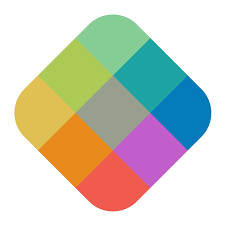
Mosaic is an intuitive and comprehensive AI-powered resource management platform that helps organizations plan, schedule and optimize resources. It allows businesses to maximize utilization and optimize resource allocation by providing a complete view of resources, tasks and workloads.
With Mosaic, companies can easily manage and collaborate on projects, plan resources and tasks, and calculate the most optimized workloads (Figure F).
Figure F
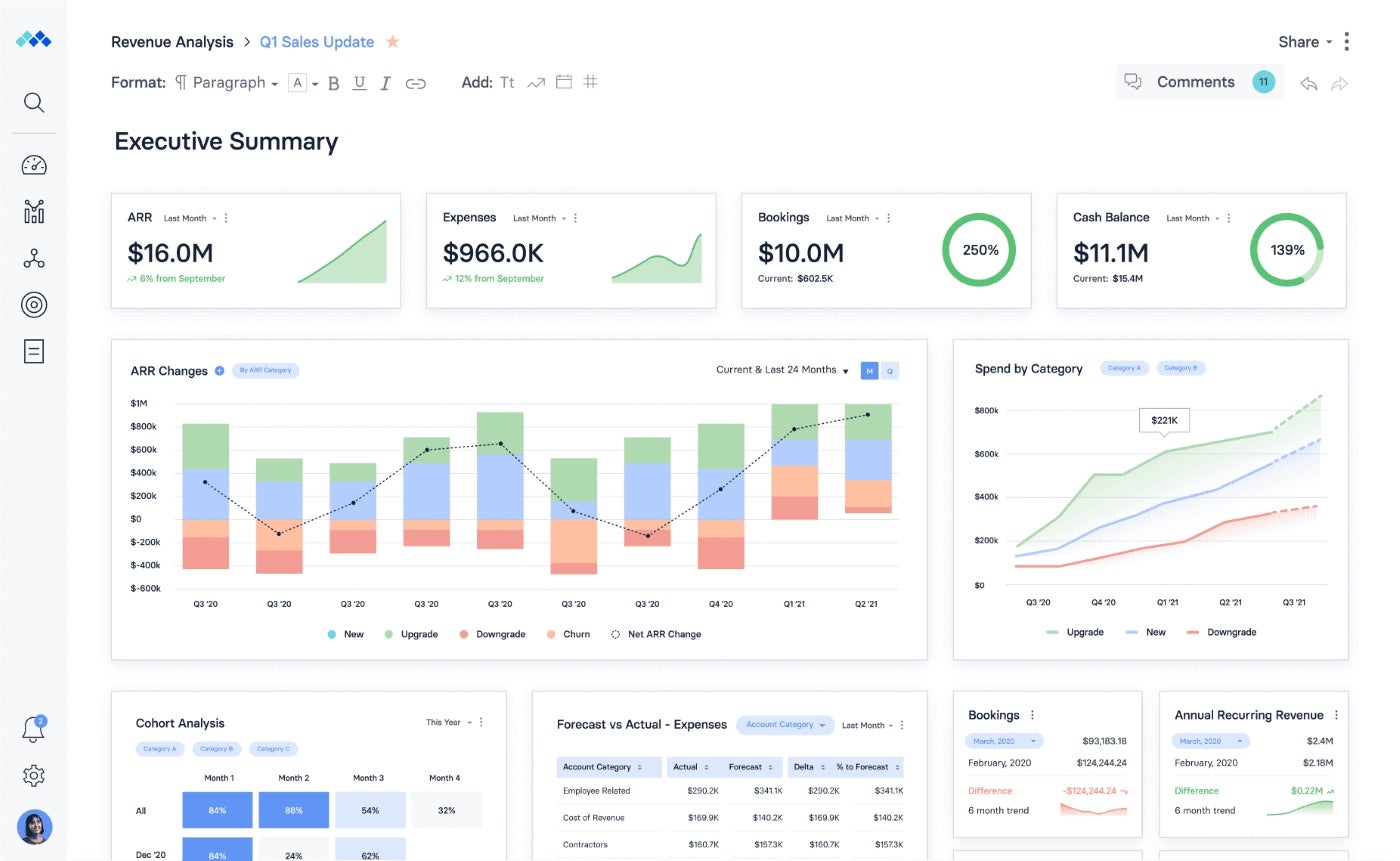
Pricing
- Team Plan: First-year discount price is $9.99 per user per month, billed annually; original price is $14.99 per user per month.
- Business Plan: First-year discount price is $14.99 per user per month, billed annually; original price is $19.99 per user per month.
- Enterprise Plan: Quote available on request.
- Add-on: $1.99 per month for additional guests, and $2.99 per month for project contractors.
Standout features
- Budget management: Mosaic allows users to track project budgets in real time.
- Financial management: Mosaic integrates with financial software and can be used for project fee budget.
- Resource and project analytics: The tool provides users with analytics to help them gain insight into team member performance, resource utilization and project progress.
- Automation: Mosaic offers automated timesheets and allows automatic rescheduling.
- Integration: Mosaic integrates with Salesforce, Google Calendar and Jira.
Pros
- Workload, utilization and budget reporting capabilities.
- iOS and Android apps.
- Drag-and-drop capabilities.
Cons
- Lacks integration with tools users will find beneficial, such as Slack, Microsoft Teams, Sage and Xero.
- Limited integration capabilities.
monday work management: Best for flexibility and customization
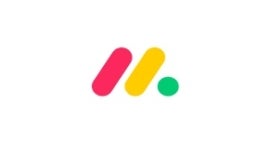
Built for project managers, monday work management helps teams coordinate and collaborate on projects from start to finish. It allows teams to plan and organize tasks, keep track of progress, and share documents and files.
The platform also provides access to analytics, reports and custom workflows. monday work management is available as both a web-based and mobile application (Figure G).
Figure G
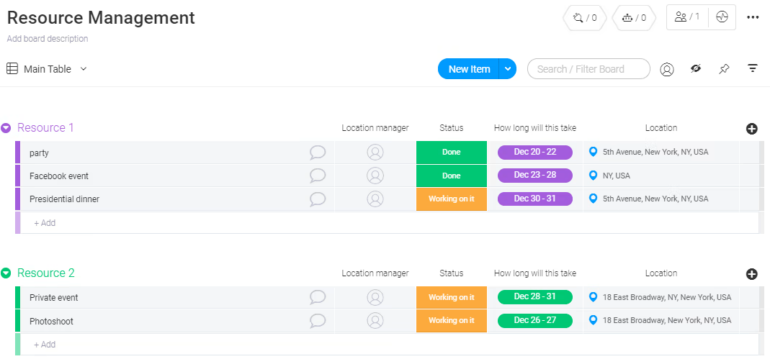
Pricing
- Individual: Free for up to two seats.
- Basic: $8 per seat per month, billed annually, or $10 per seat billed monthly.
- Standard: $10 per seat per month, billed annually, or $12 per seat billed monthly.
- Pro: $16 per seat per month, billed annually, or $20 per seat billed monthly.
- Enterprise: Contact the sales team for a quote.
Standout features
- Single sign-on: monday work management offers SSO authentication with Okta, One login, Azure AD and Custom SAML.
- Integration: The tool enables users to connect with Slack, Google Calendar, Jira, GitHub, Excel, Google Drive, Gmail, Trello, Dropbox and Typeform.
- Drag and drop: monday work management has a drag-and-drop interface for efficient project management.
- Time tracking: Users can monitor time and resource utilization through built-in timers.
Pros
- iOS and Android apps.
- Self-serve knowledge-base.
- Boost of 99.9% uptime service-level agreement.
- Automation capabilities.
- Includes over 200 templates.
Cons
- The monday work management free trial is limited to 14 days.
- There is a steep learning curve.
Bitrix24: Best for small businesses
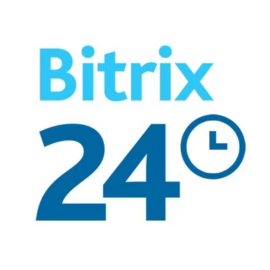
Bitrix24 is a project and resource management platform for businesses of all sizes(Figure H). The tool helps the team automate recurring tasks, manage projects and resources, and collaborate with customers and colleagues.
Bitrix24 also provides a range of communication tools, including video conferencing, instant messaging and document sharing. And it integrates with popular third-party applications such as Dropbox, Xero, Google Drive and Office 365.
Figure H
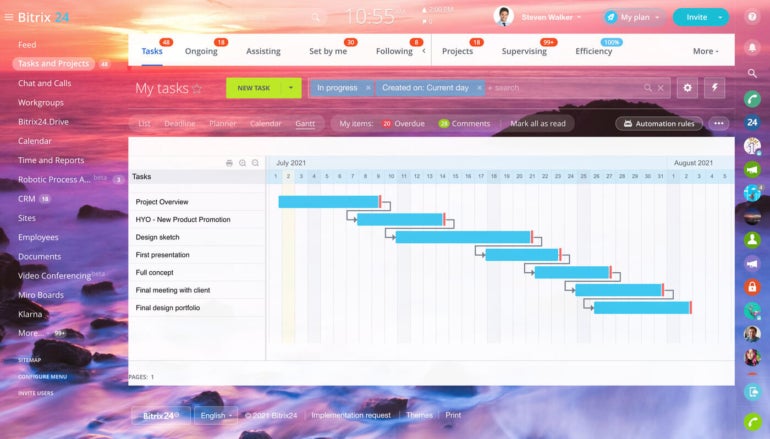
Pricing
- Free plan: Unlimited users with up to 5GB storage.
- Basic plan for up to five users: $61 per month for all users billed monthly, or $49 per month for all users billed annually.
- Standard plan for up to 50 users: $124 per month for all users billed monthly or, $99 per month for all users billed annually.
- Professional plan for up to 100 users: $249 per month for all users billed monthly, or $199 per month for all users billed annually.
Standout features
- Video conferencing: Bitrix24 supports video conferencing for up to 48 users.
- Calendar sync: The tool offers instant synchronization with external calendars like Google Calendar, Apple iCloud and Microsoft Office 365.
- Integrations: The tool integrates with Mailchimp, DocuSign, Box, Mailigen, IBM Lotus Notes and more.
- Resource allocation: Bitrix24 offers over 35 tool integrations for resource management.
Pros
- Chats and video calls with task participants.
- Observer and participant roles.
- Templates with subtasks.
- Automatic duplicates detection.
Cons
- Limited support for free and basic plans.
- Manual task time tracking.
Wrike: Best for midsize to large enterprise
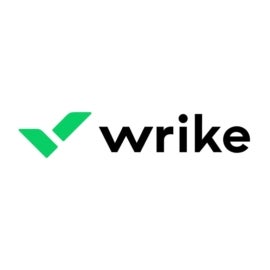
Wrike is a project management tool that includes resource management capabilities (Figure I). Wrike’s resource management solution allows users to manage team members, track availability and allocate resources to tasks and projects.
With Wrike’s resource management tools, users can view their team’s workload and availability in a centralized location, making it easier to assign tasks and balance workloads. The software also provides a drag-and-drop interface for managing resource allocations and allows users to set priorities for tasks and projects.
Figure I
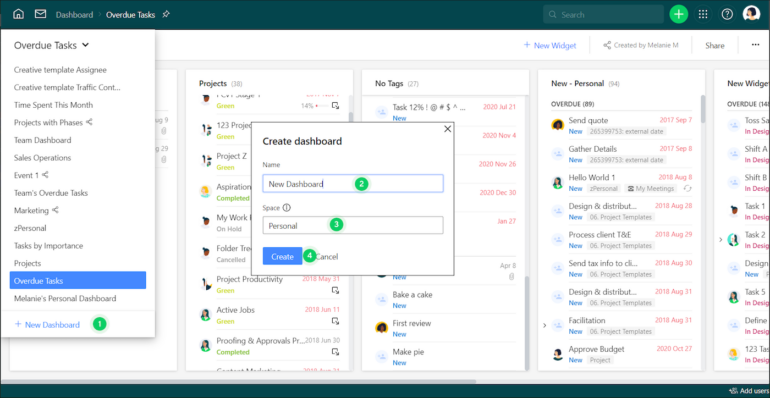
Pricing
- Free: No cost.
- Team: $9.80 per user per month for two to 25 users.
- Business: $24.80 per user per month for five to 200 users.
- Enterprise: Custom quote.
- Pinnacle: Custom quote.
Standout features
- Integration: Wrike integrates with third-party apps like Miro, Salesforce, Tableau, Zoom and Google.
- Accelerated resource planning: This feature helps estimate the resources needed for a project and provides visibility into resource allocation.
- Anticipate resource demand: Wrike provides visibility into future job roles and capacity demand.
- Budget management: With Wrike, users can monitor spending in real time.
Pros
- Time tracking capabilities.
- Kanban board for task management.
- Integrations with over 400 third-party services.
Cons
- Wrike is pricey for small businesses.
Hub Planner: Best for distributed and WFH teams

Hub Planner resource management software helps businesses manage their resources, schedule projects and track time in one centralized platform. It allows teams to easily plan and allocate resources such as people, equipment and locations as well as make real-time schedule changes.
With Hub Planner, managers can visualize resource availability and capacity, ensuring the right resources are available for suitable projects at the right time (Figure J). It also offers reporting and analytics capabilities to help businesses optimize resource allocation and improve project performance.
Figure J
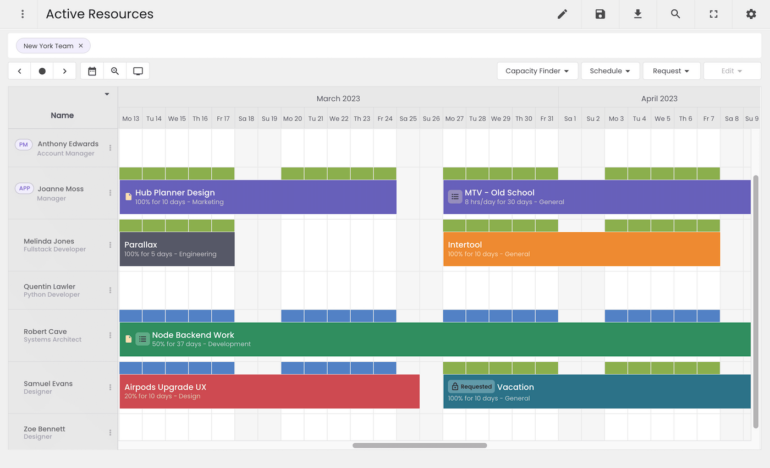
Pricing
- Plug & Play: $7 per resource per month, billed annually.
- Premium: $18 per resource per month, billed annually.
- Business Leader: Contact the Hub Planner sales team for a quote.
Standout features
- Resource scheduling: With Hub Planner, users can plan, forecast and schedule teams with its resource scheduler.
- Skills matching: Managers can find team members based on skills and custom characteristics.
- Project management: The tool allows users to create budgets and track project spending.
- Enterprise reporting: Hub Planner stands out for its reporting capabilities; users can create detailed and comprehensive reports.
Pros
- Drag-and-drop features.
- 30-day free trial.
- Capacity planning and forecasting.
- Excellent capacity planning and forecasting.
Cons
- Plug & Play plan lacks 24/7 support.
- Limited customization capability.
What are the key features of resource management software?
When shopping for your organization’s best resource management software, look for the following features:
- Reporting and analytics: The software should provide users with real-time data and analytics on resource utilization, project progress and other key performance indicators.
- Resource allocation: Your choice solution should be able to allocate resources to various projects or tasks based on their availability and skill set. This can include managing staff, equipment, and other resources.
- Capacity planning: The tool should be capable of planning and forecasting the capacity of resources, ensuring teams have enough resources to meet the demands of their projects.
- Time tracking: The software should allow teams to track planned time vesus actual hours spent on tasks and resource usage. This can help managers identify areas where resources could be more utilized.
- Task scheduling and tracking: The tool should be able to automatically assign tasks to the right people and track progress to ensure tasks are completed on time.
- Project management: The software should allow users to manage and track the progress of their projects, including milestones, budgets, deadlines and deliverables.
- Collaboration and communication: Teams should be able to collaborate, communicate in real-time, comment, reply to threads and share files with their colleagues.
Why is resource management software important for project managers?
Resource management software helps project managers efficiently manage and allocate resources, which is a critical factor in the success of a project. Here are some specific reasons why resource management software is important for project managers:
- Optimizing resource utilization.
- Managing capacity and workload.
- Accurately forecasting resource needs.
- Tracking time and progress.
- Improving collaboration and communication.
Resource management software helps project managers manage their resources better, improve the efficiency and productivity of their teams, and increase the chances of project success.
SEE: Hiring kit: Project manager (TechRepublic Premium)
How to choose resource management software
The best resource management software for you depends on your needs and preferences. Here are some steps you can take to select the best resource management software for your organization:
- Define your requirements: Start by defining your organization’s resource management needs. This includes the types of resources you need to manage, the level of complexity of your resource allocation process, and any specific features or functionalities you require.
- Evaluate different software options: Research different resource management software options, and compare their features, functionalities and pricing. Consider factors like ease of use, customization options and customer support.
- Determine compatibility: Ensure your chosen software is compatible with your existing systems and workflows and integrates well with your other tools.
- Check for scalability: Your resource management needs will likely change as your organization grows. Ensure your chosen software can scale with your organization and adapt to your evolving needs.
- Look for security features: Resource management involves handling sensitive data, so choosing software with robust security features to protect your data is essential.
- Request demos and trials: Request demos and trials of the software you’re considering to get a feel for its features, functionalities and user interface. This can help you make an informed decision before committing to a purchase.
Review methodology
We evaluated hundreds of available software solutions to determine the best resource management software in 2023. We looked at the features, pricing, customer reviews, ease of use, scalability and overall customer satisfaction. We also considered the opinions of industry leaders and customer feedback. We then identified the top-rated solutions and narrowed them down to the 10 best resource management software solutions.


